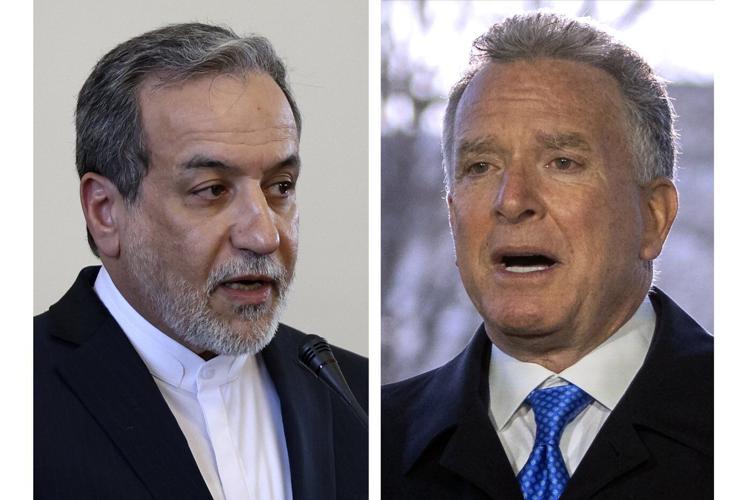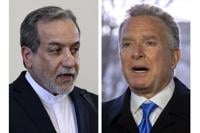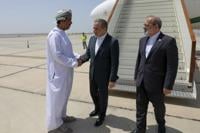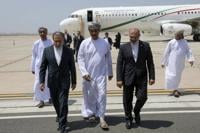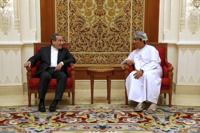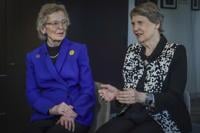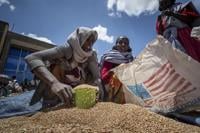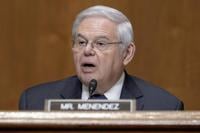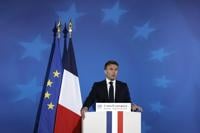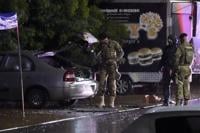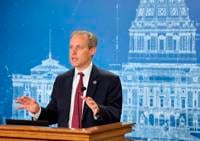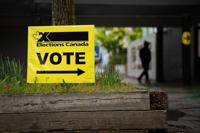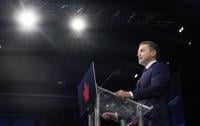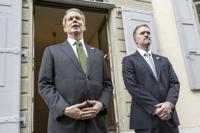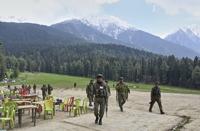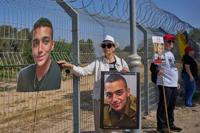DUBAI, United Arab Emirates (AP) — Iran and the United States held a fourth round of negotiations Sunday over Tehran’s rapidly advancing nuclear program, just ahead of a visit by President Donald Trump to the Middle East this week.
The talks ran for some three hours in Muscat, the capital of Oman, which has been mediating the negotiations, said a U.S. official. Iranian Foreign Ministry spokesperson Esmail Baghaei also said the talks took place that long and that a decision on the next round of talks is under discussion.
Baghaei called the talks “difficult but useful.” The U.S. official, speaking on condition of anonymity to discuss the closed-door negotiations, offered a little bit more, describing them as being both indirect and direct.
“Agreement was reached to move forward with the talks to continue working through technical elements,” the U.S. official said. “We are encouraged by today’s outcome and look forward to our next meeting, which will happen in the near future.”
Iran insisted they only took place indirectly — possibly over internal political pressures within the Islamic Republic.
The talks seek to limit Iran’s nuclear program in exchange for the lifting of some of the crushing economic sanctions the U.S. has imposed on the Islamic Republic, .
Trump has repeatedly threatened to if a deal isn’t reached. Iranian officials increasingly warn that with their stockpile of uranium enriched to near weapons-grade levels. Meanwhile, Israel has threatened to strike Iran’s nuclear facilities on their own if it feels threatened, further complicating tensions in the Mideast already spiked by .
The fourth round comes ahead of Trump’s trip
The talks again saw Iranian Foreign Minister Abbas Araghchi and U.S. Mideast envoy Steve Witkoff . They have met and spoken face-to-face but the majority of the negotiations appear to have been indirect, with Omani Foreign Minister Badr al-Busaidi shuttling messages between the two sides.
“The discussions included useful and original ideas reflecting a shared wish to reach an honorable agreement,” al-Busaidi wrote afterward on the social platform X.
Iran has insisted that keeping its ability to enrich uranium is a red line for its theocracy, with Araghchi before the talks describing Iran's program as springing from “the blood of our nuclear scientists." Israel is widely suspected of carrying out assassinations targeting the program's scientists.
“From our viewpoint, enrichment is a subject that should definitely continue and there is no room for compromise on that," Araghchi told Iranian state television after the talks. “It is possible that we consider some limits on its dimensions, amount and level for trust building, similar to the past.”
Witkoff has muddied the issue by first suggesting in a television interview that Iran could enrich uranium at 3.67%, then later saying that all enrichment must stop.
“An enrichment program can never exist in the state of Iran ever again,” Witkoff told the right-wing Breitbart news site in a piece published Friday. “That’s our red line. No enrichment. That means dismantlement, it means no weaponization, and it means that Natanz, Fordow, and Isfahan — those are their three enrichment facilities — have to be dismantled.”
Iran’s 2015 nuclear deal with world powers capped Tehran’s enrichment at 3.67% and reduced its uranium stockpile to 300 kilograms (661 pounds). That level is enough for nuclear power plants, but far below weapons-grade levels of 90%.
Since the nuclear deal’s collapse in 2018 with Trump’s unilateral withdrawal of the U.S. from the accord, Iran has abandoned all limits on its program and enriched uranium to up to 60% purity — a short, technical step from weapons-grade levels. There have also been a series of attacks at sea and on land in recent years, stemming from the tensions even before the Israel-Hamas war began.
Iran faces pressures at home as talks continue
Iran also faces challenges at home, exacerbated by sanctions. Its troubled rial currency, once over 1 million to $1, has strengthened dramatically due to the talks alone to around 830,000 to $1.
However, the two sides still appear a long way from any deal, even as time ticks away. Iranian media broadly reported a two-month deadline imposed by Trump in his initial letter sent to Iran’s Supreme Leader, Ayatollah Ali Khamenei. Trump said he wrote the letter on March 5, which made it to Iran via an Emirati diplomat on March 12 — putting the deadline in theory as Monday when Trump takes off from Washington for his trip to Saudi Arabia, Qatar and the United Arab Emirates.
Iran’s internal politics are still inflamed over , or headscarf, with women still ignoring the law on the streets of Tehran. Rumors also persist over the government potentially increasing the cost of subsidized gasoline in the country, which has sparked nationwide protests in the past.
Meanwhile, the last round of talks in Oman on April 26 took place as , killing dozens of people and injuring over 1,000 others. Iran still hasn’t explained what caused the blast at the Shahid Rajaei port, which has been linked to .
____
Associated Press writer Nasser Karimi in Tehran, Iran, contributed to this report.

